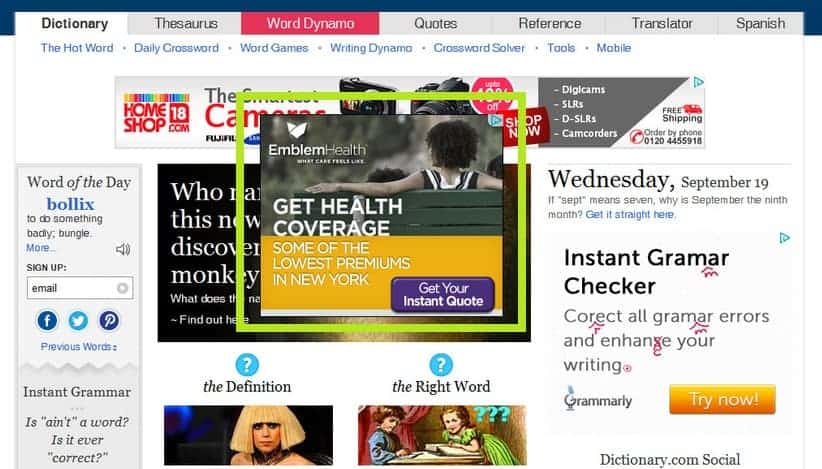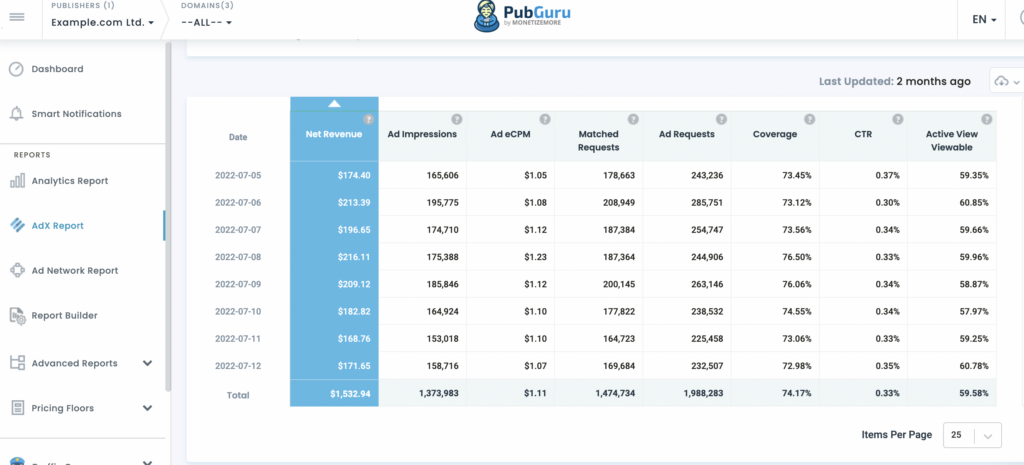Navigating the multifaceted AdTech landscape requires both expertise and state-of-the-art tools. Leading the forefront of these tools is Google Ad Manager. To fully harness its capabilities, understanding the deployment of interstitials and pop-unders is crucial. In this comprehensive guide, we’ll elucidate how to proficiently execute an interstitial or pop-under advertisement via Google Ad Manager.
Decoding Interstitial Ads and Pop-unders
Interstitials and pop-unders dominate the modern ad scene. Let’s demystify these powerful formats and uncover their potential.

Interstitial Ads
These are full-screen ads overlaying the app or website interface. They’re prevalently deployed on mobile devices, manifesting at natural transition junctures, such as during a page load or between game levels.
Salient Features:
- Comprehensive screen coverage: Offers ample scope for imaginative content and messaging.
- High user engagement: Due to their overwhelming presence, these ads capture attention effortlessly.
- Tactical positioning: Introduced during natural transition points ensuring maximum impact.
Pop-unders
Pop-unders, in essence, are akin to pop-up ads but emerge beneath the active window. They subtly capture user attention without immediate disruption, making their presence felt once the primary window is minimized or closed.
Salient Features:
- Understated visibility: Doesn’t obstruct immediate user experience.
- Enduring impression: Maintains visibility post-closure of the primary content.
- Refined targeting: Tailor-made for users grounded in their online behaviors.
Utilizing Google Ad Manager for Interstitials and Pop-unders
Harnessing the might of Google Ad Manager can redefine potential revenue improvements. Discover the art of perfecting interstitials and pop-unders within this platform.
Setting Up Interstitial Ads
- Google Ad Manager Access: Log into your account.
- Venture into ‘Inventory’: Select ‘Ad units’ followed by ‘New ad unit’.
- Determine ad metrics: Opt for ‘Mobile app’ as the inventory category. Set the size dimensions ideally at
320x480for portrait and480x320for landscape orientations. - Advanced configurations: Under ‘Delivery settings’, ensure ‘Interstitial’ is chosen.
- Roll-out: Save configurations, prepping your interstitial ad unit for deployment.
Streamlining Pop-unders
- Google Ad Manager Portal: Navigate to your dashboard.
- Engage ‘Inventory’: Opt for ‘Ad units’ followed by ‘New ad unit’.
- Set ad metrics: ‘Desktop’ should be your chosen inventory type. Dimensions like
800x600or1024x768best suit pop-unders. - Advanced configurations: Incorporate custom coding to facilitate the ad’s display behind the principal browser window.
- Launch: Secure your settings, priming your pop-under ad unit for presentation.
Prerequisites for Effective Ad Deployment
For publishers aiming to maximize their digital footprint, a meticulous preparation is paramount. Delve into the prerequisites ensuring your ad deployment is poised for success.
Audience Segmentation
Ensure precise targeting. Leverage Google Ad Manager’s sophisticated targeting paradigms, segmenting your audience based on age, location, or online behaviors, thus making your advertisements more resonant and captivating.
Ad Frequency Regulation
Modulate the frequency of ad exposures to a user within specific time brackets. This ensures users aren’t overwhelmed, sustaining a gratifying user interface.
Adaptive Design
Certify that interstitial advertisements are dynamic, seamlessly molding to diverse device metrics and screen orientations.
Compelling Content
The advertisement, whether interstitial or pop-under, must be pertinent, engrossing, and should bring tangible value to the user. Employ superior graphics, discernible call-to-actions, and succinct messaging to bolster engagement indices.
Monitoring and Refinements
The deployment of your ad units is only half the battle. Ensuring they achieve maximum efficacy demands constant vigilance and refinement. Let’s dissect the intricacies of monitoring and refining ad units through Google Ad Manager.
Key Performance Indicators (KPIs) Assessment

- Impressions: Monitor the number of times your ad was displayed. A high impression rate means greater visibility but doesn’t necessarily indicate interaction.
- Click-Through Rate (CTR): This metric defines the ratio of users who clicked on the ad to the number who merely viewed it. A higher CTR typically indicates a more effective ad, resonating with its audience.
- Viewability: It’s essential to discern how often your ad is actually viewable to users. This metric takes into account factors like ad placement, user behavior, and more.
- Conversion Rate: Gauge the percentage of users who perform a desired action after viewing or clicking the ad, such as signing up for a newsletter or making a purchase.
- Ad Revenue: This direct measure indicates the revenue generated from the ad, vital for assessing return on investment.
User Feedback and Interaction Metrics

- Engagement Rate: Understand the depth of interaction users have with your ad, like video completion rate or interactions with dynamic content.
- Bounce Rate: Measure the percentage of visitors who navigate away from the site after viewing only one page. A high bounce rate could indicate that your landing page isn’t resonating with visitors.
- Feedback and Comments: User comments and direct feedback can offer qualitative insights that pure metrics might overlook.
Once active, constant performance monitoring is non-negotiable. Google Ad Manager’s intricate reporting tools are tailored for this, capturing metrics from impressions to conversions. Interpret this data wisely, refine strategies, and continually optimize for pinnacle outcomes.
Conclusion
Strategically deploying interstitial and pop-under advertisements through Google Ad Manager is a game-changer for advertisers vying for superior visibility and user engagement. With a solid grasp of each ad type’s distinctiveness, accurate setup protocols, and a commitment to incessant optimization anchored in performance metrics, your digital advertising game is set to soar.
Want to know if interstitials or pop-unders will be a lucrative revenue stream for yours? MonetizeMore is a Google Certified Publisher Partner and can help you take your ad revenue to the next level! Sign up today.
source https://www.monetizemore.com/blog/how-to-run-an-interstitial-or-pop-under-via-google-ad-manager/



0 Comments